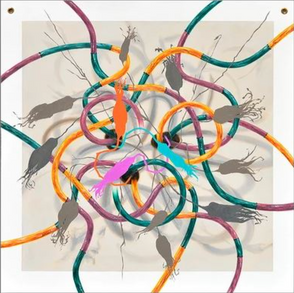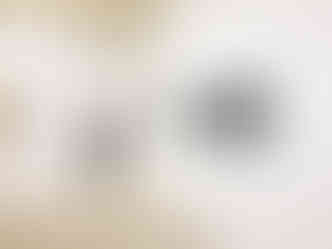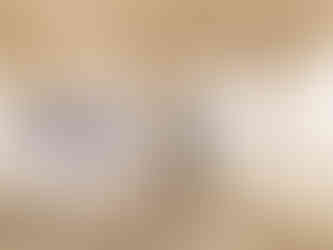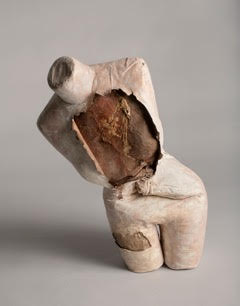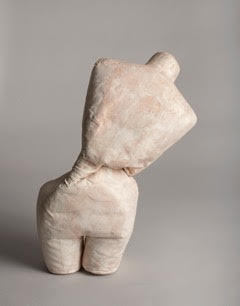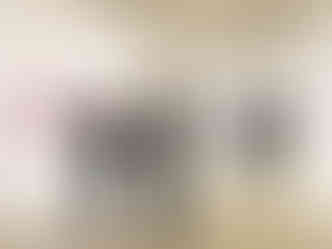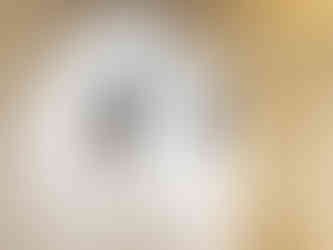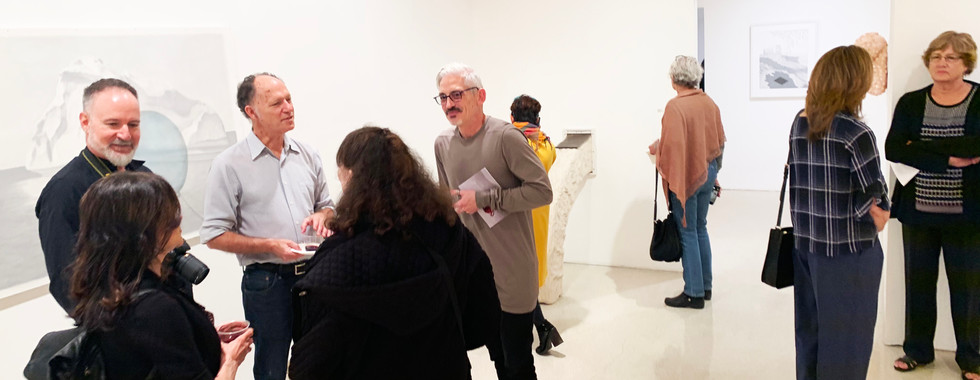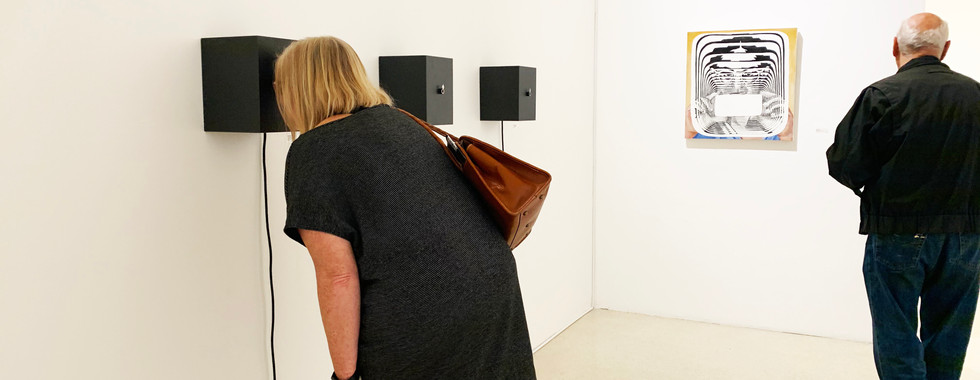November 16, 2019 – January 17, 2020
Curated by Yaron Dotan and Christine Rasmussen

The Snow Man
One must have a mind of winter
To regard the frost and the boughs
Of the pine-trees crusted with snow;
And have been cold a long time
To behold the junipers shagged with ice,
The spruces rough in the distant glitter
Of the January sun; and not to think
Of any misery in the sound of the wind,
In the sound of a few leaves,
Which is the sound of the land
Full of the same wind
That is blowing in the same bare place
For the listener, who listens in the snow,
And, nothing himself, beholds
Nothing that is not there and the nothing that is.
- Wallace Stevens
Humans are innately creative. We have the ability to make something out of nothing, with just our bare hands. But lately our newest innovations have become soulless, the human touch lost in the pursuit of purported efficiency and flawless design.
In this show, the artists bear witness. Observe closely. Respond with hand-crafted objects. Through shadows, empty landscapes, broken and reassembled vessels, depictions of invisible people, and humans distorted by technology, an understanding begins to form. Delacroix said, "I can paint you the skin of Venus with mud, provided you let me surround it as I will." Likewise, the artists declare: We will give you a human being made of emptiness provided you let us surround it as we will.
They ask viewers to see for ourselves, suggesting, as Wallace Stevens did in his poem The Snow Man, that we behold the "nothing that is not there, and the nothing that is."
Exhibition Tour
Holly Boruck
A common thread in Holly's art making practice is a deep interest in the human psyche and earthly experiences. She is interested in asking questions about the nature of reality and feels a tender sensitivity toward the outcast, shunned and darker corners of who-we-are. Holly works in painting, drawing and sculpture, feeling most comfortable making work with her hands.
Exist (pictured below) is body of work that explores the creative and destructive energies inherent in the universe. The pain and suffering of existence is inevitable, but there is also the will to transcend and triumph. For The Nothing That Is, my work asks the audience to suspend ideas about status quo, the knowable, predictability, and instead to accept what's out of our control, savor beauty that is fleeting and to embrace the scars we accrue through the extraordinary experience of existence.
My artworks are grouped into triptychs connected through process, a mirror for the human experience. I begin by creating unblemished, 'perfect' ceramic sculptures; newborns. The sculptures are then shattered into pieces, a reflection of entropy, pain, suffering and the chaotic nature of reality. The damaged sculptures are re-constructed into new forms; disfigured but intact, flawed beauty, a reconsideration about the nature of 'beauty'. The last stage of the process results in a painting that synthesizes the entire process of transformation, becoming the embodiment of a new 'whole'.
Omni-Optic (pictured below) is a reaction to our contemporary 'omni-optic' facts of life. We've successfully transformed Foucault's architecture of the 'Panopticon' (surveillance of the guilty/accused), into a digital/technological 'Omnioptican' (surveillance of the innocent). One can't discuss surveillance without referencing Eric Arthur Blair's (aka George Orwell) book '1984'. Big Brother IS here but unlike '1984', there is still a thread of individual autonomy (or, is it simply the illusion of freedom that remains?). Data collection is scientific, clinical and devoid of emotion, therefore seemingly also without threat or even ethics; sweeping up information, silently, gently, secretly. And we accept this omnipresent monitoring because we fear, are told to fear threats to our security (real and manufactured). "What is the society we wish to protect? Is it the society of complete surveillance of the commonwealth? Is this the wealth we seek to have in common – optimal security at the cost of maximal surveillance?" (Tom Stoppard) Are we safer because of our uber surveillance culture? Is it worth it? What are we relinquishing? And, what are the costs of complacency? Admittedly, the vision of this work examines the darker, more troubling aspects of surveillance culture. I understand that there are always positive outcomes to technological advances. Here though, I see an ominous and colossal imbalance. As in quantum physics, the mere act of observation affects the behavior of the observed – we are not free.
Arminée Chahbazian
Arminée's work as a sculptor informs the process behind her works on paper, as well as her painting. Composition, form, color and texture evolve through an experimental immersion in the physicality of materials. Most recently, the content and thrust behind the work is based on observations of environmental shifts, with a thematic focus on the aesthetics and power of water and natural phenomena. Nature's self-described vulnerability, endurance, beauty and drama are all present, yet it is the human response to nature's continuity and mystery that drives Arminée's work. Abstraction joins representation to suggest a somewhat surreal environment where questions outweigh answers.
Displacements (pictured below) are observations of natural phenomena in the landscape, particularly those defining my very remote, undeveloped live and work space, inform many of the spatial and surrealistic images in these works on paper and duralar. Likewise, certain patterns and structures sourced from nature inspire the dynamic layering and consequential narrative. With a history as a sculptor, I’m keenly aware of spatial relationships, and approach the work as if I’m carving space and constructing forms at the same time. My core focus is to interweave natural history with human consciousness, to describe the evolving relationship between my living, breathing self and the land that sustains me.
My imagery is based on an awareness of shifting environments whereby life forms can become strangely displaced. The vast macro scale of the landscape fading in the distance, in tandem with the micro view of its inhabitants jars their natural relationships and an inherent dreaminess emerges. Time feels stopped. In the selection and isolation of each chosen landscape, I strive to address the beauty, drama and reverence that treasured places have inspired in the human experience. Yet, there is a sense that it is all fading away and becoming physically inaccessible and/or evolving into a figment of human imagination. The
life forms and structures occupying these places seem out of their element, displaced and hanging on for their survival; a fully realized existence occupies a knife’s edge.
The duality of being displaced can illicit a sense of loss or despair, while simultaneously offering a thread of hope. Through monochromatic and carefully layered presentations, these slow-paced narratives are intended to inspire quiet contemplation, to illuminate changing realities and to give voice to the alteration of planet earth.
Chelsea Dean
Dean’s studio practice includes printmaking, drawing, photography, sculpture, and collage techniques, exploring architecture, home life, personal artifacts, and the decay of domestic ideals. Her process involves thoughtful exploration, documentation, gathering, and reimagining of both urban and rural landscapes. Recent work in assemblage, sculpture, and installation is inspired by her field studies and found objects from abandoned homesteads in Wonder Valley. This sparsely populated region of Southern California’s High Desert experienced a building boom brought on by the United States Small Tract Act in the late 30s. But by the early 60s thousands of homesteaders abandoned the cabins and other structures that they had built. With layering of elements and information she has observed and gathered, Dean’s recent work imagines the entropy of what was once full of promise sliding into inevitable decay.
Yaron Dotan
Yaron Dotan is a Los Angeles-based artist who works in a variety of media and styles to produce optical drawings, narrative paintings, portraiture and video art. As part of an ongoing project Dotan has travelled throughout more than twenty states drawing roadside portraits of people from all walks of life using his signature marker and white-out style in what became the Draw America Project.
The Riddle of Samson (pictured below) was created by making hundreds of marker and white-out drawings on a single sheet of 8.5x11” paper. It depicts the ancient biblical story of Samson with its mysterious riddle: “Out of the eater, something to eat; out of the strong something sweet.” As each hand-drawn image is completed it is then defaced and buried forever under the drawing that succeeds it. What ensues is a meditation on the meaning of the riddle. The final image is that of a single sheet of paper, thickly caked in white-out, forever entombing the succession of drawings. The entire artistic journey would have vanished forever had a scan not been made of each drawing progression–every scan used as an animation frame. The process is remembered here in the complete piece–The Riddle of Samson. The music for this video art was composed by Kaz Boyle.
The paintings (pictured below) are made using acrylic and India ink. They are composed using pulsations and rhythms taken from optical imagery and design. I build gradations of tone onto a rhythmic framework to delineate an image that is constantly being interrupted and abstracted.
Through this work I want to present ‘seeing’ without seeing, to explore the vast distances that separate even the most intimate of connections. We all know and care about others, and yet are surprised sometimes by how little we truly know about their motivations and thinking. Likewise, there are objects, places and ideas we hold dear to ourselves which reveal sudden, surprising and even confounding aspects, even after we thought we knew them well.
I have only ever seen out of one eye, and don't see three dimensionally the way others take for granted. I started making these images with the aid of a neurobiologist who specializes in optics and am using this drawing style to explore questions I have about how the eye works, how this affects perception, and what knowledge is.
Dawn Marie Forsyth
Dawn Marie Forsyth was born and raised in Los Angeles, California, where she continues to live and work. She uses a deconstruct/reconstruct mixed-media process to create paintings, sculptures and installations that question identity-centered concepts imposed by culture, society and gender. She will often times mix found objects from childhood and from her current urban environment to serve as part of the story telling.
Jenn Fuentes
Jenn Fuentes' artwork focuses on the beauty found in everyday life. She works with oil on wood, as well as ink on paper. In addition to her art making, she enjoys teaching others to explore their own creative artistic abilities. Many of her students have gone on to fulfilling careers based on these talents.
My vision of art is that it should be a tool to inspire and nurture the beautiful aspects of human nature. The images I work with are devoted to questioning the notions of true beauty and love. This is important in a society run by an all too powerful media that forces stereotypes of both based on superficiality. To combat the effect of these stereotypes my work forces viewers to question the qualifications we are using to judge what we consider to be beautiful, and which moments we choose to see as depicting love. I do this by painting figures who are extraordinarily beautiful, but not in that airbrushed way we have become accustomed to. The beauty of my figures is found in their humility, in the way they approach their own image in a mirror, when no one is around, or in how they interact with other living things who have gained their trust, like a lover or pet. The moments I choose tend to be mostly private ones where the figures are comfortable in their surroundings. Recently I have also placed my figures in public settings, revealing the ease of spirit that can come from self love and the love found in friendships. It is in this ease where true beauty can be found- it is natural, not forced. It is genuine, not calculated. It is unique, not generic.
Kaloust Guedel
Kaloust Guedel is a Los Angeles based artist of Armenian descent. He is known as the founder of the Excessivism movement. Guedel is an experimental artist, who consistently defines his visual vocabulary.
My work takes a critical view of social, political and cultural issues. The latest body of work reflects the excesses of the Capitalist system. The concept was born as a result of studio experimentations and research in the area of economics.
I introduced industrial plastic into my work as a result of the Getty's Pacific Standard Time research project in 2011. Artists from Light and Space movement were presented in the same space and time intensely and in condensed fashion.
Regardless of its final form I consider my work a painting. I apply acrylic to the industrial plastic from both sides. Doing this maintains the reflective surface of the plastic allowing the light to bounce where painted and penetrate through where it is not painted, creating multiple variations on the same surface for a mysteriously unexpected outcome. The third and non-physical medium used in my work is Light. Possessing the quality of variations of colors, textures and depth.
During the creative process I let myself go. I let the natural instinct take control over the process and accept the results. This open channel method makes it possible to explore my inner sensibilities. I may not have been aware of their existence before.
My work is very much influenced by Modernism in general. Among my contemporaries Frank Stella's wall sculptures have had profound effect on my sense of depth and relational sensibilities.
Regardless of all... when I paint, I paint life. I paint as imperfect, as the truth may be.
Hayden and Lepore
As a couple, Michael Henry Hayden and Anthony Lepore have cultivated parallel individual and collaborative art practices, curated historical exhibitions, grown edible gardens, built a shared studio in the middle of a working bikini factory, restored a collection of 3000 19th-century glass plate negatives, and reared a large collection of endangered poisonous frogs. Since 2014, the artists have actively worked together on sculptural collaborations. This work finds root in their shared interests and domestic life together. The sculpture included here, for example, is inspired by the artists’ dog, Wilby.
Larry Kagan
Larry Kagan is a sculptor who uses steel, light and cast shadow as a creative medium.
We are more or less aware of the presence of shadows, since they tell us something about our environment, but we do not actually look at them – unless they call attention to themselves by some unfamiliar or unexpected behavior. My challenge was to induce viewers to actually look at the shadow rather than solely at the steel. I began shifting more of the narrative burden to shadow. The more content the eyes could detect in the shadow, the more time and attention they would expend on exploring its details…
Andrew Paine
Andrew Paine has applied his creativity to both painting and music. His paintings are rich with texture and apply sculptural processes to the world of painting. He is inspired by surfaces in found in nature, such as stone covered with traces of sedimentation, and unintentional, random patterns found in the man-made world, such as traffic-worn paint on a crosswalk.
Geological Painting (pictured below) explores the layered interaction of varying paint qualities across complex surfaces. The seeming contradictory third dimension of the medium becomes essential in directing the flow of paint across these surfaces.
Within the sculptural aspect of the paint medium, the surface is built up and layered using loose and improvisational marks. An improvisation constrained and directed by geometric forms and human symbol making. An improvisation in harmony with the qualities of the medium, not forced upon the medium. Like Chinese scholar stones or pottery.
New layers are added in reaction with the qualities of the previous underlying layers. Successive layers are added almost obsessively , layer after layer creating a rich and harmonious surface. Through this process, forms emerge or recede from this rich field through subtle variation of color and value. All in a tight harmony.
This working process mimics processes acting on surfaces in nature. Surfaces such as stone covered with traces of sedimentation, or traffic worn cross-walk paint. Fluids turned solid interacting in layers. It is also an exploration of the relationships possible between sculptural relief and painting; sculptural processes applied to the world of painting.
Christine Rasmussen
As a painter I investigate the in-between, depicting mundane yet familiar urban landscapes. I distort space, light, and distance to create dreamlike environments.
Anonymous architectural structures are contrasted with floating fabrics that imply a human presence in the otherwise vacant spaces.The hovering cloth superimposed in the static environment conveys a sense of time, as if the viewer has caught a specific moment.We linger in that moment, noticing new details that were there all along, patiently waiting to be discovered by a discerning observer.
Exploring themes of emptiness and aloneness, boundaries and belonging interests me as a global nomad who finds familiarity in every city I visit. My current work explores the diverse metropolis of Los Angeles with its striking Southern California light, while continuing to be influenced by my nomadic past and the colors of my international youth.Artistic influences include Edward Hopper, Richard Diebenkorn and poet Maya Angelou.
Colin Roberts
Colin Roberts’ Glass Pillows are kaleidoscopic wonders completely handmade from hundreds of plexiglass tiles glued together. The Pillows are completely hollow. The saggy, fluffy organic forms are made up of hard, durable material that give the illusion of softness. To some they resemble a small Buddha-like being or even a human torso. Light reflects off the pillows like a disco ball and can fill a room with shards of light. Colin’s inspiration was to use the Pillow as a form because it’s something every human can relate to, yet most rarely contemplate. A pillow is a symbol for comfort, rest, sleep and dreams. The different color tiles and reflecting light resemble the shifting visuals of our unconscious. The Pillows are my way of combining my interest in architecture, light and one of our body’s most important functions –the dream state.
Linda Vallejo
Linda Vallejo consolidates multiple, international influences gained from a life of study and travel throughout Europe, the United States and Mexico to create works that investigate contemporary cultural and political issues.
The photographic image is enveloped and obscured by the color red. The color red is imbued with symbol and meaning. Red pigment made from ochre was one of the first colors used in prehistoric art. The Ancient Egyptians and Mayans colored their faces red in ceremonies; Roman generals had their bodies colored red to celebrate victories. It was also an important color in China, where it was used to color early pottery and later the gates and walls of palaces. In the Renaissance, the brilliant red costumes for the nobility and wealthy were dyed with kermes and cochineal. The 19th century brought the introduction of the first synthetic red dyes, which replaced the traditional dyes. Red also became the color of revolution; Soviet Russia adopted a red flag following the Bolshevik Revolution in 1917, later followed by China, Vietnam, and other communist countries. Since red is the color of blood, it has historically been associated with sacrifice, danger and courage. In modern times in Europe and the United States the color red is also the color most commonly associated with heat, activity, passion, sexuality, anger, love and joy. In China, India and many other Asian countries it is the color of symbolizing happiness and good fortune. Finally, in Native Indigenous culture the color red signifies the north and symbolizes war, wounds, blood and victory, the sunset, thunder, and earth.
San Juan Capistrano I & II are “enveloped” in red so that the color is used as a symbol of its history.
Joséphine Wister Faure
Joséphine’s work is built around her experiments on narration, through different forms of expression: video, performance, installation, writing, sculpture. She questions the mechanisms of perception as well as the observer’s implication and creates openings for a narrative in which no scenario is imposed. The expansion of space and time builds its very own dramaturgy, and the strangeness of the circumstances alone engages the viewer’s interpretation.
In parallel to her visual artwork, Josephine has regularly worked in film, crafting props and accessories, which has led her to perfect different special effect techniques that serve her in her personal work. She lives and works in Los Angeles and in Paris.
My work is built around experiments on narration through video, performance, installation, sculpture and text. I freeze a moment in a story that often revolves around an accident. A sense of threat entwined with fantasy and femininity haunts each of these narratives, and the viewer is driven to search for clues.
I stage spirits by using special effect techniques and question the mechanisms of perception. My aim is to capture the ethereal, the illusion that is present in art. I want to seize that instant where you experience a double-take and question the magic in a piece and, in turn, your own reality.
Monica Wyatt
Wyatt re-imagines unexpected and overlooked materials, transforming them into intimate assemblage sculpture. Through her material alchemy, ordinary objects metamorphose into poetic three dimensional creations that appear to have evolved organically.
I first realized my love for visual storytelling when I began producing and directing television shows. Starting with the writer’s script, my palette was everything seen through the camera’s lens: actors, movement, light, and mood. Shot by shot, I wove together these images into two-dimensional dramas.
I longed, however, to tell my own stories, to move beyond words and pictures and to explore themes that ignited my imagination. My assemblages became the three-dimensional stories I wanted to tell: stories about relationships, childhood, time passage, nature, marriage, motherhood, and secrets never told.
In my assemblage work, I re-imagine and merge strange and overlooked materials into sculptures that look like they might have evolved that way organically. What’s old becomes new again and disparate combinations are reincarnated into playful and evocative creations. My work encourages viewers to allow their imaginations to be jostled, to look, and look again at the re-envisaged compositions, perhaps catching reflections of their own stories.
Opening Reception






























































































